What Is Used To Measure Temperature
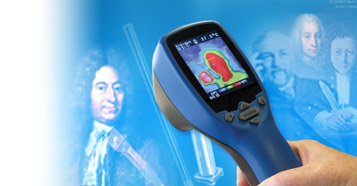 The sensations of hot and cold are fundamental to the human experience, yet how to measure temperature has challenged many nifty minds. It's unclear if the aboriginal Greeks or Chinese had means to measure temperature, so as far as we know, the history of temperature measurement began during the Renaissance.
The sensations of hot and cold are fundamental to the human experience, yet how to measure temperature has challenged many nifty minds. It's unclear if the aboriginal Greeks or Chinese had means to measure temperature, so as far as we know, the history of temperature measurement began during the Renaissance.
The Temperature Measurement Challenge
Heat is a measure of the energy in a body or material — the more than energy, the hotter information technology is. Merely unlike concrete backdrop of mass and length, it's been difficult to measure out. Almost methods or temperature sensors have been indirect, observing the upshot that rut has on something and deducing temperature from this.
Creating a scale of measurement has been a claiming, besides. In 1664, Robert Hooke proposed the freezing point of h2o exist used as a goose egg point, with temperatures being measured from this. Around the same time, Ole Roemer saw the need for ii fixed points, allowing interpolation between them. The points he chose were Hooke's freezing point and also the humid point of water. This, of course, leaves open the question of how hot or common cold things tin become.
That was answered past Gay-Lussac and other scientists working on the gas laws. During the 19th century, while investigating the outcome of temperature on gas at a constant pressure, they observed that book rises past the fraction of ane/267 per caste Celsius, (after revised to i/273.fifteen). This led to the concept of accented zero at minus 273.15°C.
Temperature sensors based on Liquids and Bimetals
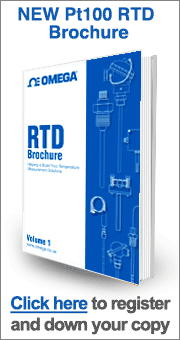 Galileo is reported to have congenital a device that showed changes in temperature sometime around 1592. This appears to accept used the contraction of air in a vessel to depict up a cavalcade of h2o, the elevation of the column indicating the extent of cooling. However, this was strongly influenced past air pressure level and was fiddling more than a novelty.
Galileo is reported to have congenital a device that showed changes in temperature sometime around 1592. This appears to accept used the contraction of air in a vessel to depict up a cavalcade of h2o, the elevation of the column indicating the extent of cooling. However, this was strongly influenced past air pressure level and was fiddling more than a novelty.
The thermometer every bit nosotros know information technology was invented in 1612 in what is now Italy by Santorio Santorii. He sealed liquid inside a drinking glass tube, observing how it moved upwardly the tube as it expanded. A scale on the tube made it easier to see changes, but this temperature measuring device lacked precise units.
Working with Roemer was Daniel Gabriel Fahrenheit. He began manufacturing thermometers, using both alcohol and mercury equally the liquid. Mercury is platonic, as it has a very linear response to temperature alter over a large range, only concerns over toxicity have led to reduced use. Other liquids have at present been adult to replace it. Liquid thermometers are still widely used, although it is important to control the depth at which the seedling is immersed. Using a thermowell helps ensure good rut transfer to the temperature sensor.
The bimetallic temperature sensor was invented tardily in the 19th century. This takes reward of the differential expansion of two metal strips bonded together. Temperature changes create bending that can be used to activate a thermostat or a gauge similar to those used in gas grills. Accurateness is low — maybe plus or minus 2 degrees — but these sensors are cheap, so they have many applications.
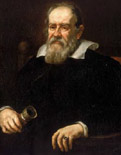
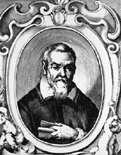
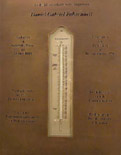
Examples of sensors based on liquids and bimetals
 Fluid-Expansion thermometers
Fluid-Expansion thermometers
Fluid-expansion devices, every bit the household thermometer, mostly accept ii classifications: the mercury type and the organic-liquid type. Nevertheless some gas versions are also available. Fluid-expansion sensors do not require electric power, practice not pose explosion hazards, and are stable even after repeated cycling.
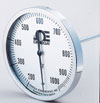 Bimetallic Measurement Devices
Bimetallic Measurement Devices
Bimetallic thermometers have strips of 2 metals bonded together. When heated, one side will expand more than the other, and the resulting angle is translated into a temperature reading by mechanical linkage to a pointer.
Thermoelectric Effects
Early in the 19th century, electricity was an exciting expanse of scientific investigation, and scientists soon discovered that metals varied in their resistance and conductivity. In 1821, Thomas Johann Seebeck discovered that a voltage is created when the ends of dissimilar metals are joined and placed at different temperatures. Peltier discovered that this thermocouple outcome is reversible and tin can be used for cooling.
In the same year, Humphrey Davey demonstrated how the electric resistivity of a metal is related to temperature. Five years subsequently, Becquerel proposed using a platinum-platinum thermocouple for temperature measurement, simply it took until 1829 for Leopoldi Nobili to actually create the temperature sensor.
Platinum is also used in the resistance temperature detector invented in 1932 by C.H. Meyers. This measures the electrical resistance of a length of platinum wire and is more often than not considered the most accurate type of temperature sensor. RTDs using wire are by nature fragile and unsuitable for industrial applications. Contempo years accept seen the development of motion picture RTDs, which are less authentic but more than robust.
The 20th century also saw the invention of semiconductor temperature measuring devices. These reply to temperature changes with proficient accuracy only until recently lacked linearity.
In this other article we comprehend the main differences of those temperature sensors.
Examples of sensors based on thermoelectric effects
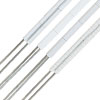 Thermocouple Sensors
Thermocouple Sensors
Thermocouples consist essentially of 2 strips or wires fabricated of unlike metals and joined at 1 terminate. Changes in the temperature at that juncture induce a change in electromotive force (emf) between the other ends.
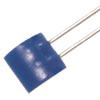 RTDs
RTDs
RTDs rely on resistance modify in a metal, with the resistance rise more or less linearly with temperature. These type of sensors are one of the most accurate temperature sensors and are broadly used in industry and labs.
 Thermistor Probes
Thermistor Probes
Thermistor probes are thermistor elements embedded in metal tubes. Since thermistors are not-linear, the musical instrument used to read the temperature must linearize the reading.
Thermal Radiation
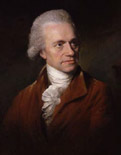
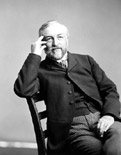
Very hot and molten metals glow, giving off heat and visible light. They radiate heat at lower temperatures, also, but at longer wavelengths. English astronomer William Herschel was the starting time to recognize, around 1800, that this "dark" or infrared light causes heating. Working with his compatriot Melloni, Nobili plant a way to notice this radiated free energy by connecting thermocouples in a series to make a thermopile.
This was followed in 1878 by the bolometer sensor. Invented by American Samuel Langley, it used 2 platinum strips, one of which was blackened, in a Wheatstone bridge organization. Heating by infrared radiation acquired a measurable alter in resistance.
Bolometers are sensitive to infrared low-cal across a broad range of wavelengths. In contrast, the photon detector-blazon devices developed since the 1940s tend to respond just to infrared in a limited moving ridge band. Lead sulphide detectors are sensitive to wavelengths up to iii microns while the discovery of HgCdTe ternary alloy in 1959 opened the door to detectors tailored to specific wavelengths.
Today, cheap infrared pyrometers are used widely, and thermal cameras are finding more applications equally their prices drop.
Examples of sensors based on thermal radiation
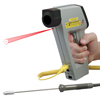 Infrared Temperature sensors
Infrared Temperature sensors
Infrared sensors are non-contacting devices. They convert the energy to an electrical signal that tin can be displayed in units of temperature after beingness compensated for ambient temperature variation.
Temperature Scales
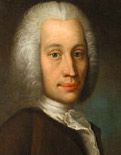
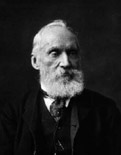
When Fahrenheit was making thermometers, he realized he needed a temperature calibration. He set the freezing bespeak of common salt water at thirty degrees and its humid bespeak 180 degrees higher. Afterward it was decided to utilize pure water, which freezes at a slightly higher temperature, giving u.s.a. freezing at 32°Fand boiling at 212°F.
A quarter century afterwards, Anders Celsius proposed the 0 to 100 scale, which today bears his proper noun. Subsequently, seeing the benefit in a stock-still indicate at one stop of the scale, William Thomson, later Lord Kelvin, proposed using absolute zero equally the starting point of the Celsius organisation. That led to the Kelvin scale, used today in the scientific field.
Today, temperature measurement scales are defined in a document titled International Temperature System ninety, or ITS-90 for short. Readers wishing to bank check or amend empathise their measurement units should obtain a copy.
What Is Used To Measure Temperature,
Source: https://www.omega.co.uk/technical-learning/history-of-the-temperature-sensor.html
Posted by: reamhiscaralls.blogspot.com


0 Response to "What Is Used To Measure Temperature"
Post a Comment